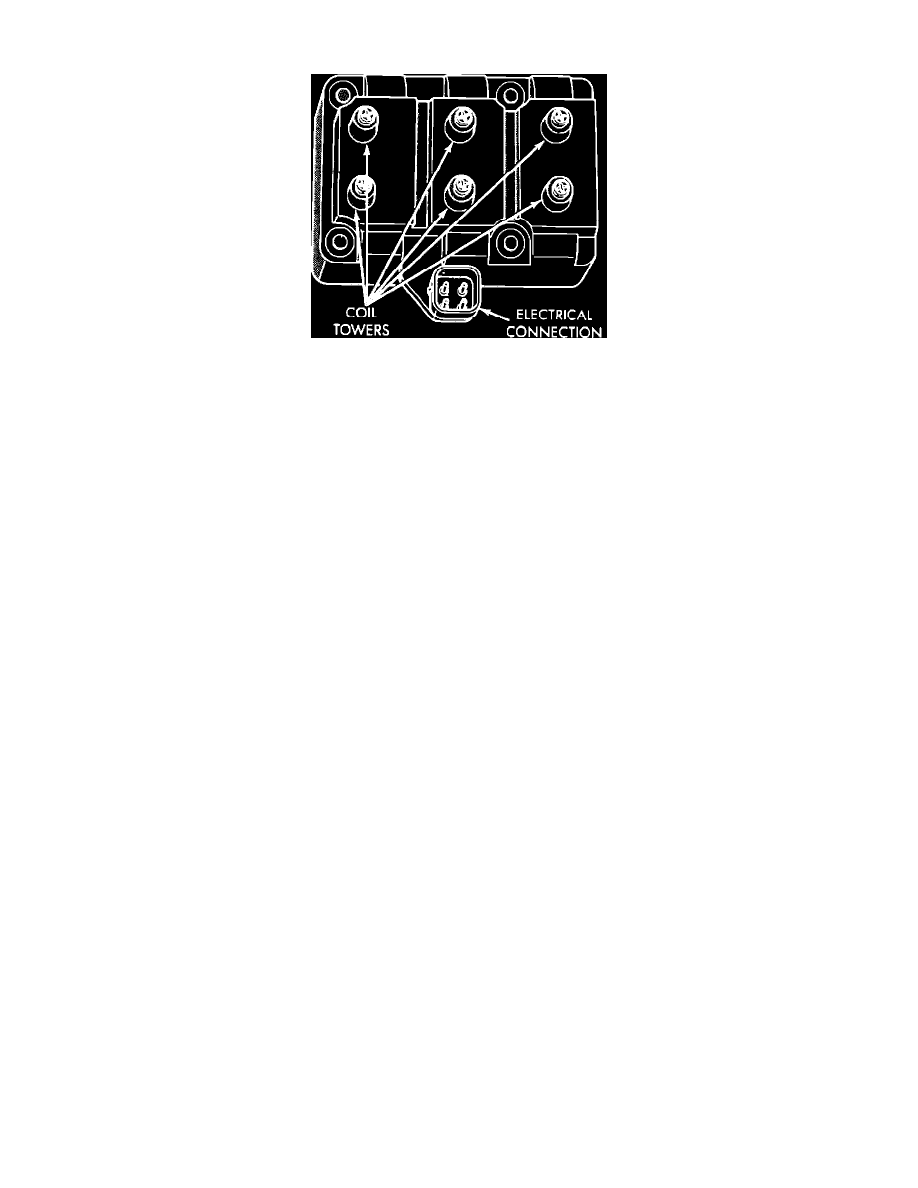Voyager AWD V6-201 3.3L (1992)

Ignition Coil: Description and Operation
Molded Coil
Location
Mounted on the intake plenum, above thermostat housing.
Purpose
Steps up primary voltage of 12 Volts to a secondary voltage great enough to arc across the spark plug gap, and ignite the air fuel mixture,
(25,000-35,000 Volts).
Operation
The PCM uses the Camshaft and Crankshaft Position (CKP) sensor inputs to determine when to charge and fire the coils.
The Powertrain Control Module (PCM), Controls Ignition Dwell And Timing Through The Coil Primary Ground.
Power is supplied to the positive side of coils by the ASD relay.
When the primary windings of a coil are grounded by the PCM, current flow in the windings generates an electromagnetic field. (Low primary
resistance of 0.57-0.65 ohms, allows the PCM to fully charge each coil in a very short period).
The electromagnetic field is concentrated by the iron core.
When the ground is removed, the concentrated field collapses, inducing high voltage in the secondary windings.
Secondary Voltage Is Routed To The Spark Plugs Via The Secondary Ignition Cables, (in pairs).
Each coil within the pack is wired to fire two spark plugs at the same time, waste spark system. (One negative voltage and the other positive.)
- The coil outputs are wired so that when one plug is fired during a compression stroke, the other plug being fired is on an exhaust stroke,
(waste spark system).
- The next time this coil is fired, the plug that was on the exhaust stroke will be on the compression stroke and the one that was on the
compression stroke will be on the exhaust stroke.
Construction
The coil pack consists of three epoxy filled ignition coils molded together in one pack.
Each coil consists of a primary winding, (2-3 hundred turns of heavy gauge wire), over the secondary windings, (30-40 thousand turns of light
gauge wire), wrapped around a soft iron core, embedded in an epoxy compound to protect the coil from vibration damage.
